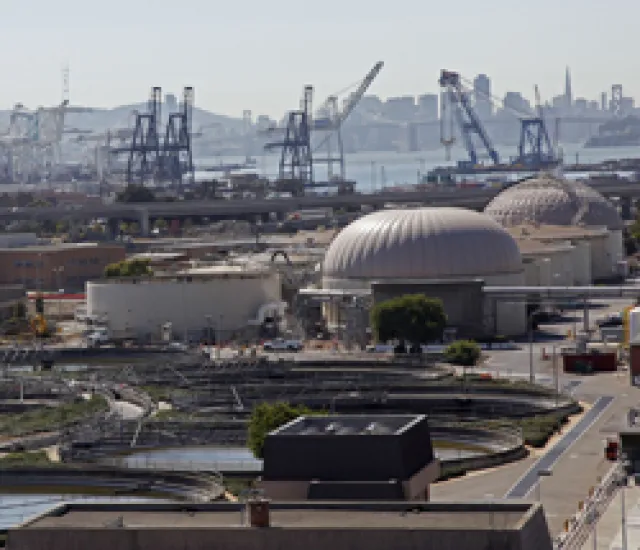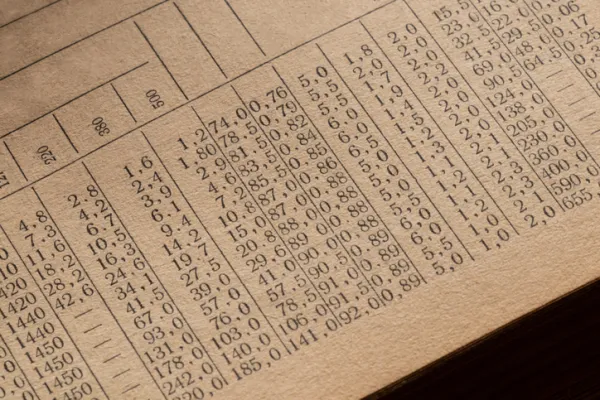Municipal bonds are considered by many investors to be one of the safest investment options available. But a report released by Ceres last fall argued that many such bonds have unaccounted-for risks lurking in the water – literally.
The report, called “The Ripple Effect: Water Risk in the Municipal Bond Market,” made the case that investors and credit rating agencies are overlooking profound risks in these investments involving impending shortages in water supply, droughts, surging demand for water, and pollution. In the report, Ceres also introduced a model developed by PricewaterhouseCoopers to assess these risks.
Using this new water-risk assessment model, the report’s writers scored six water utility bonds. The Los Angeles Department of Water & Power’s water system bond earned the title of riskiest, based on tight water restrictions resulting from environmental regulations and drought. The utility’s water bond had been rated AA+ and Aa2 by Fitch and Moody’s, respectively, earlier in the year.
Institutional Investor reporter Katie Gilbert recently spoke with the report’s head writer, Sharlene Leurig, senior manager of insurance programs at Ceres. They discussed how attitudes around water risk have changed since the report was published in October, why rating agencies were heartened by the report’s call to action, and how carbon may lend a helping hand in bringing water risk issues to the fore.
Institutional Investor: What has the reception to The Ripple Effect report been like, and what’s happened around the issue in the months since it was published?
Leurig: We’ve seen a very significant amount of interest. There was a whole seminar held by the National Federation of Municipal Analysts [in February] on risks to essential service providers, including water utilities, and the sorts of invisible or hidden risks within those sorts of bonds, which is especially relevant since investors are starting to move into what they consider to be the safest bonds out there. What we’ve heard from that group is that there’s increasing awareness of the hidden risks that might be lying in some of the bonds that are considered the safest.
We also heard from the rating agencies, including S&P and Fitch, that indeed the sorts of risks that we drew out in our report are consistent with what they have been hoping investors would pay attention to for quite some time. And I think they recognize that perhaps the way that they’ve communicated those risks hasn’t been quite as strong as it should be. But they also anticipate that the sorts of risks that we described will be more strongly felt in the market moving forward.
And I think we’re also seeing, there’s going to be a lot more information made available to investors in the coming years that will help them to better differentiate the more competitive systems from the less competitive systems. I know Bloomberg has been developing its own water information service, and while that’s mainly trained on corporate water users, there’s reason to expect that that might begin to extend to other water users, some of whom do issue municipal bonds.
One thing to keep an eye out for: the World Resources Institute, based in D.C., has been collaborating with Goldman Sachs and General Electric on developing publicly available risk-mapping tools for financial analysts around critical stressed water sheds. The first one they did was the Yellow River in China, but the next one that they’re collecting information for is the Colorado River. I think that that will play a really significant role in turning investors’ attention domestically; a lot of the discussions that have happened around water scarcity and credit risk have really been very much focused on developing countries, which obviously have critical water constraints, but those sorts of risks exist in the U.S. as well, although they haven’t been made as visible.
Rating agencies are waiting for investors to pick up on these risks? Isn’t it their job to shift attention that way?
It’s an excellent point. In some ways I think they’re covering themselves, but also what they’ve said to us and to investors is that they adjust what they make public in their rating opinions and what they bring to the foreground based on the sorts of risks that investors care about. I think that their point is that it’s a risk that’s been there, it’s one that investors need to pay better attention to, and to the extent that there continues to be more visibility and more awareness of it, that will be reflected in their rating opinions.
I think the other thing that they’ve been saying is that there needs to be better disclosure on the side of the issuers. Part of the questions going forward is, How do we improve the state of disclosure? Is that something that should be going from the regulatory level down, is it something where there needs to be some voluntary standards that are adopted across the sector, or is it something that investors need to be demanding?
What will Ceres be doing with regards to this issue going forward?
In the late summer we’ll be launching a process to develop disclosure for issuers as well as guidance for analysts. That’s something that needs to be done kind of in collaboration with those communities – understanding what they need, but also bringing to light some of the unrecognized risks and things that are lacking in disclosure currently.
We also have been in regular engagement with the ratings agencies around this issue and have heard from them that they understand they need to update the way that they talk about water risk and the sort of assistance they provide to analysts around the ways that water risk might affect issuers.
It’s not going to be an overnight change. But it’s similar to what we’ve seen, for example, with carbon pricing and carbon regulations. It took us some time to get the rating agencies to start integrating that into their analysis, and now, just recently, we had Standard & Poor’s come out and say that they are integrating climate risk into all corporate bond ratings. So that was a big announcement; it was something that’s been years in the making. I think that now that we have that ground established with the rating agencies on climate, that will allow us to talk about water as a similar emerging risk – one that’s been undisclosed in many sectors for some time, and that is going to be increasingly material.






